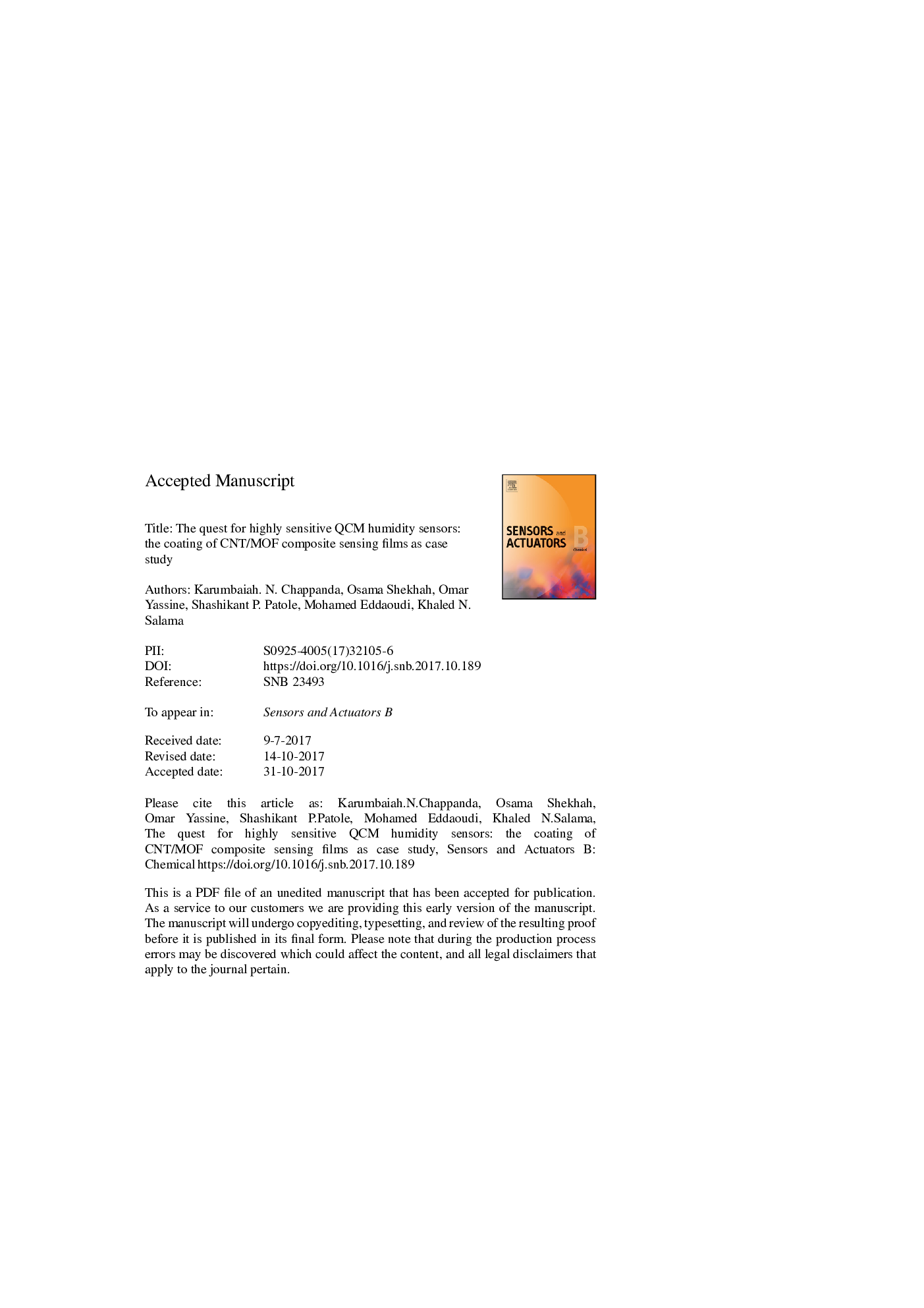| Article ID | Journal | Published Year | Pages | File Type |
|---|---|---|---|---|
| 7141486 | Sensors and Actuators B: Chemical | 2018 | 36 Pages |
Abstract
The application of metal-organic frameworks (MOFs) as a sensing layer has been attracting great interest over the last decade, due to their uniform properties in terms of high porosity and tunability, which provides a large surface area and/or centers for trapping/binding a targeted analyte. Here we report the fabrication of a highly sensitive humidity sensor that is based on composite thin films of HKUST-1 MOF and carbon nanotubes (CNT). The composite sensing films were fabricated by spin coating technique on a quartz-crystal microbalance (QCM) and a comparison of their shift in resonance frequencies to adsorbed water vapor (5-75% relative humidity) is presented. Through optimization of the CNT and HKUST-1 composition, we could demonstrate a 230% increase in sensitivity compared to plain HKUST-1 film. The optimized CNT-HKUST-1 composite thin films are stable, reliable, and have an average sensitivity of about 2.5Â ÃÂ 10â5 (Îf/f) per percent of relative humidity, which is up to ten times better than previously reported QCM-based humidity sensors. The approach presented here is facile and paves a promising path towards enhancing the sensitivity of MOF-based sensors.
Related Topics
Physical Sciences and Engineering
Chemistry
Analytical Chemistry
Authors
Karumbaiah. N. Chappanda, Osama Shekhah, Omar Yassine, Shashikant P. Patole, Mohamed Eddaoudi, Khaled N. Salama,
